FEATURED
2020.8.28 FRI
Exhibition
The World of the Paris Opera As Seen Through the “In Situ” Series
Pierre-Elie de Pibrac exhibition, “In Situ”, is held from September 19th at the former main building of the Kyoto Prefectural Building as a program for the KYOTOGRAPHIE 2020 following the exhibition at CHANEL NEXUS HALL in March. In addition to the stories about dancers and ballet performances in the In Situ series, Mariko Omura, the author of “the Paris Opera Ballet Story” and the ex-director of madame Figaro Japon Paris, explores the history and charm of the Paris Opera. It introduces you to the world of “In Situ” and the Paris Opera.
Over the years, many photographers have photographed the dancers of the Paris Opera Ballet, but of all these, surely none can have been as blessed as Pierre-Elie de Pibrac. The photographs that comprise the “In Situ” exhibition have been carefully selected from the huge quantity of work that he took over a period of two years. Unlike the pictures we are used to seeing of the Paris Opera, depicting the dancers on stage, dressed in their costumes and picked out by the spotlights, Pierre-Elie’s capture them backstage, sometimes from one side, sometimes from overhead, presenting a completely different image to that that created by photographs taken from the front of the stage. He ventured to capture them at rehearsals, on stage and in the studio, utilizing unique angles. In other words, Pierre-Elie provides us with a remarkable opportunity to discover the Paris Opera from viewpoints that are not available to audience.
A remarkable opportunity. This is true also of the photographer himself. Looking back over the two years he was involved in this project, he says, ‘I have been given unbelievably wonderful opportunity! That was how I felt as the work progressed. I was able to experience everything that happened inside the Paris Opera, every day, from extremely close proximity and from every imaginable angle.’
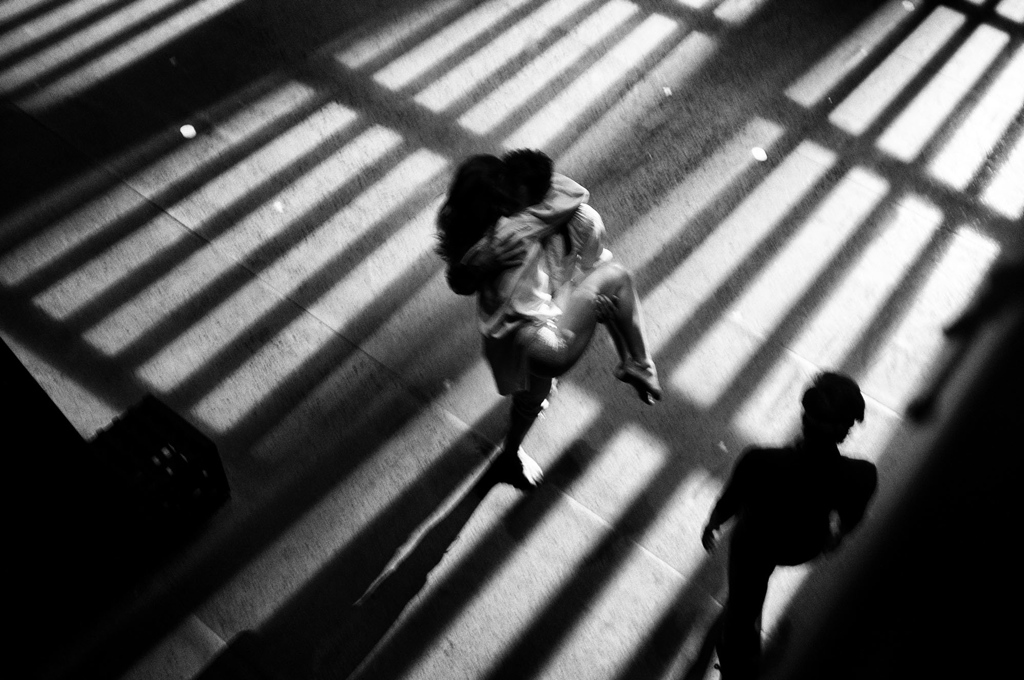
Stage scene of Le Parc from the “Confidences” series
“The greatest gift you can give me would be to carry out a project at the heart of the Paris Opera Ballet”
It all started with these words spoken by Olivia, the woman who was to later become his wife. It was in March 2009, the two of them had gone to see Angelin Preljocaj’s production of Le Parc at the Palais Garnier and she made this remark as they left the theatre, filled with excitement. Having received this idea, he began to carry out research into ballet and the Paris Opera, then he approached Brigitte Lefèvre, who was director of dance at the time, for permission to carry out the project. Hearing his request, she told him that he was welcome to move around the Paris Opera freely and photograph for the entire 2013 to 2014 season. During the season, which starts in September and ends in July, it is customary for two ballets to be performed at the end of the year, in two theatres, and during the 2013–2014 season when he was photographing, the Opéra Bastille featured Sleeping Beauty, choreographed by Rudolf Nureyev, while the Palais Garnier gave a repeat performance of Le Parc, the very work that had motivated him to start this project in the first place! What a coincidence.
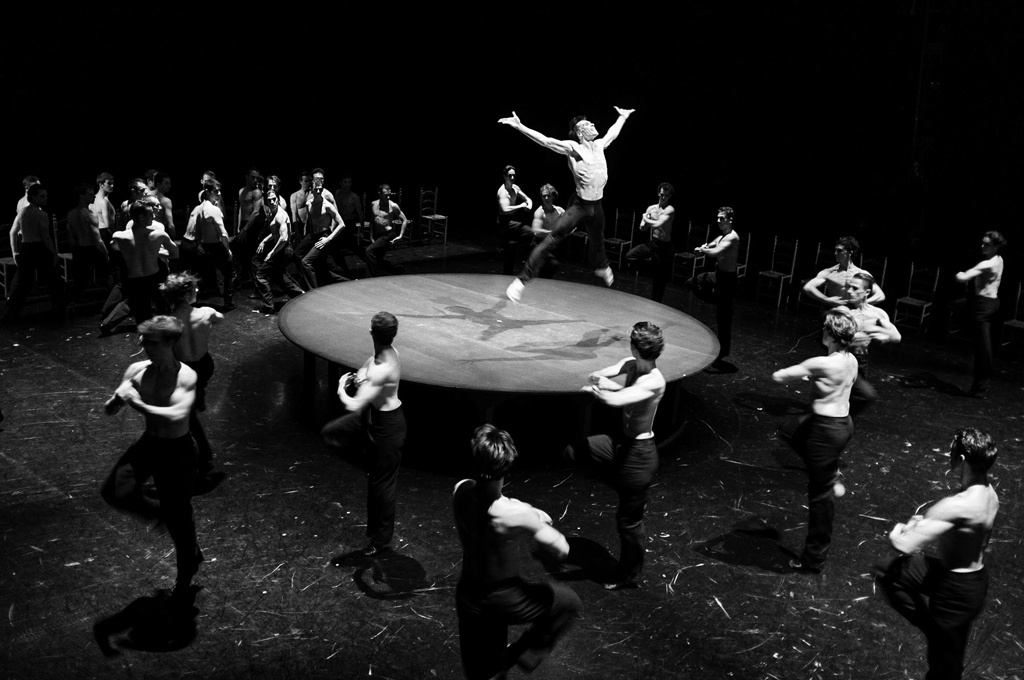
Stage scene of Boléro from “Confidence” series, Nicola Le Riche Farewell Gala
The 2013–2014 season, during which he commuted regularly to the Paris Opera, was an interesting season with a richly varied program. For instance, there was Daphnis et Chloé, choreographed by Benjamin Millepied and with Daniel Buren, a leading figure in the art world, in charge of stage design, the resulting production causing a sensation that went beyond the confines of the ballet world. This was also a year in which three étoile (star dancers) retired. In the Paris Opera Ballet, retirement for both men and women dancers, regardless of their physical condition, is at the age forty-two but the star dancers, who stand at the peak of the pyramid hierarchy, are allowed to hold a farewell performance if they so desire. The season opened with Agnès Letestu performing in Lady of the Camelias for her farewell, then in February Isabelle Ciaravola danced in Onegin before leaving the company. Finally, on July 9, at the end of the season, Nicolas Le Riche performed in a rare gala performance that he arranged himself as his farewell. He danced his most famous roles from Le jeune homme et la mort, Appartement and Boléro, maintaining his dignity as king of ballet and mesmerizing the whole audience up until the very end! He was Pierre-Elie’s favorite dancer and being moved to tears by the performance, Pierre-Elie managed to capture this emotion in his photographs.
During the final performance before the étoiles take their leave from the Paris Opera, a unique atmosphere fills the stage and auditorium. For the fans who have followed the career of the dancer, the farewell performance is one that they cannot afford to miss and one of the reasons why Pierre-Elie decided to photograph for a second season in 2014–15 was because he did not want to miss the farewell performance by Aurélie Dupont (now director of dance at the Paris Opera Ballet).
With the departures of the étoiles in the 2013–14 season, new star dancers needed to be selected. The emotional moment when a new étoile is born is one that not only ballet fans, but numerous other people want to witness but nobody, not even the dancers themselves, are able to predict when it will happen. On the last day of the Onegin performance on March 5, 2014, Amandine Albisson, who danced the leading role of Tatiana, was nominated to be a new étoile. This was immediately following the announcement of her retirement by Isabelle Ciaravola, who played the same role, and Pierre-Elie was very surprised. He never imagined that he would witness a generational change that took such a tangible form.
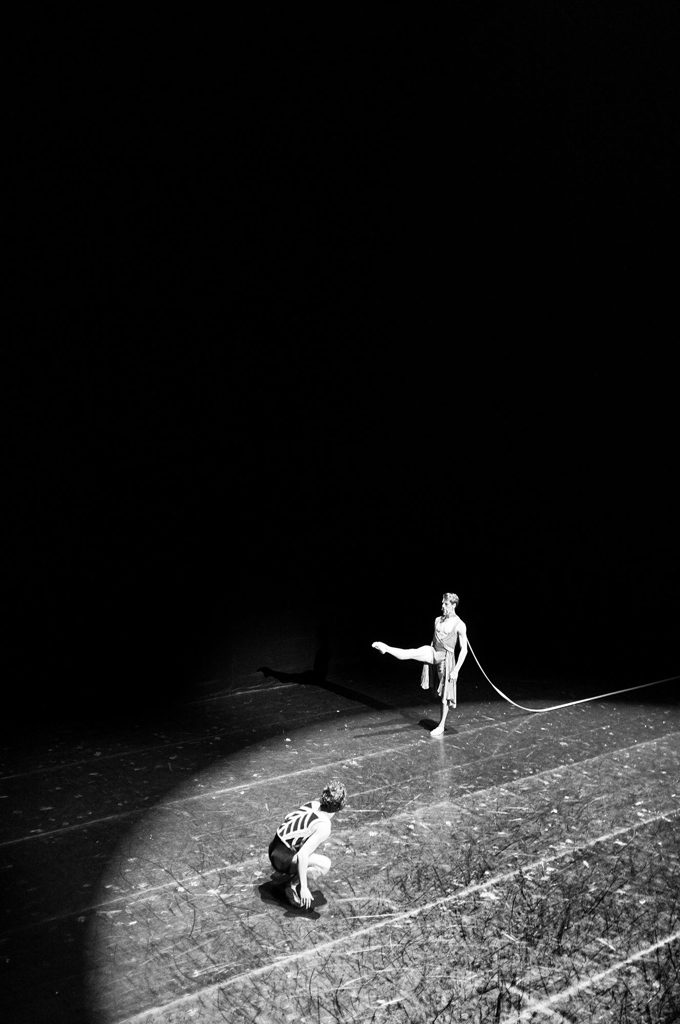
Germain Louvet from the “Confidences” series
After joining the company, the dancers take part in an annual competitive examination in hope of rising in rank and perhaps one day become the next étoile. In April 2014, the Young Dancers of the Paris Opera Ballet performed for the first time in a while and twenty-five dancers who hoped to join the company as members of the Corps de ballet in the future danced that night. Among them were Germain Louvet, Léonore Baulac and Hugo Marchand, who are all now étoiles. During the two years he was photographing, Pierre-Elie also paid special attention to Germain and Hugo. This was the last season that Brigitte Lefèvre would serve as dance director and probably for this reason, she organized a performance consisting of ten creative works she had asked the choreographers to produce during her tenure. More than half of these were works created by dancers who were members of the company. For instance, the dance that Germain Louvet performed was from Nicolas Le Riche’s Caligula, produced in 2005. He played the part of Emperor Caligula’s favorite horse, Incitatus, dancing to a violin rendition of Vivaldi’s Four Seasons: Winter, expressing the grace and power of the horse through marvelous leg and pointe work. Even if this work were to be performed again, an étoile would never play the part of Incitatus and so this priceless moment can only be experienced now through his photographs.
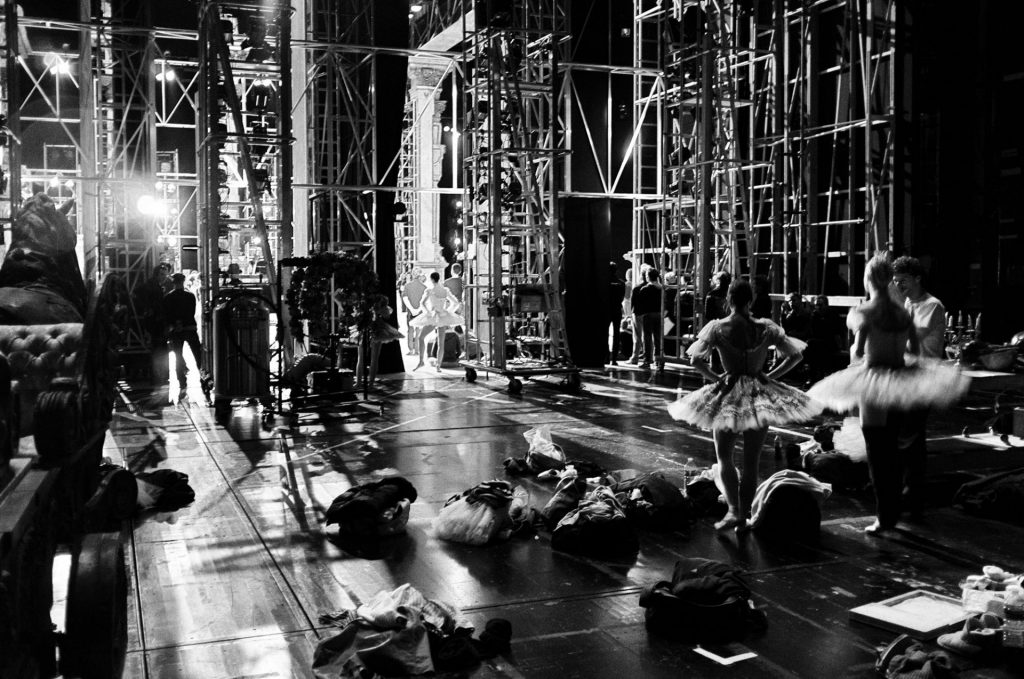
From the “Confidences” series
Pierre-Elie was able to move freely throughout the Paris Opera Ballet, witnessing everything that happened there. Becoming like the invisible man or a chameleon, the opportunities he had to photograph were limitless. His lens captured the dancers when they were both tense and relaxed. He captured the various moments that were revealed before his eyes everyday focusing on the contrast of light and shade. The soloists waiting behind stage for their entrance, the dancers from the corps de ballet watching from the wings, dancers relaxing during a break in rehearsals…behind the scenes or in the rehearsal studio, he captured the dancers’ daily lives, from unguarded moments, through the course of the dance until the climax in a perfect pose. It is a secret world that rarely sees the light of day. He named the series of work he took in this way, using his power of observation and insight to secretly capture these moments, “Confidences”.
Lessons in the morning, rehearsals in the afternoon and performances in the evening—this is the dancers’ daily routine but for outsiders, it appears to be an incredible succession of days. However, while Pierre-Elie was photographing, the dancer’s daily program underwent a major change. A young choreographer with whom he had had become friendly while he was working on Daphnis et Chloé, Benjamin Millepied, took over from Brigitte Lefèvre as dance director a few months later when she left after almost twenty years in the post. Witnessing this change in dance director, it felt to Pierre-Elie as if a fresh wind had blown through the atmosphere backstage. Millepied took over the post in November 2014 and not wanting to miss this opportunity, there was a baby boom among the women dancers from the end of the season, this being a little-known inside story of the 2013–14 season.
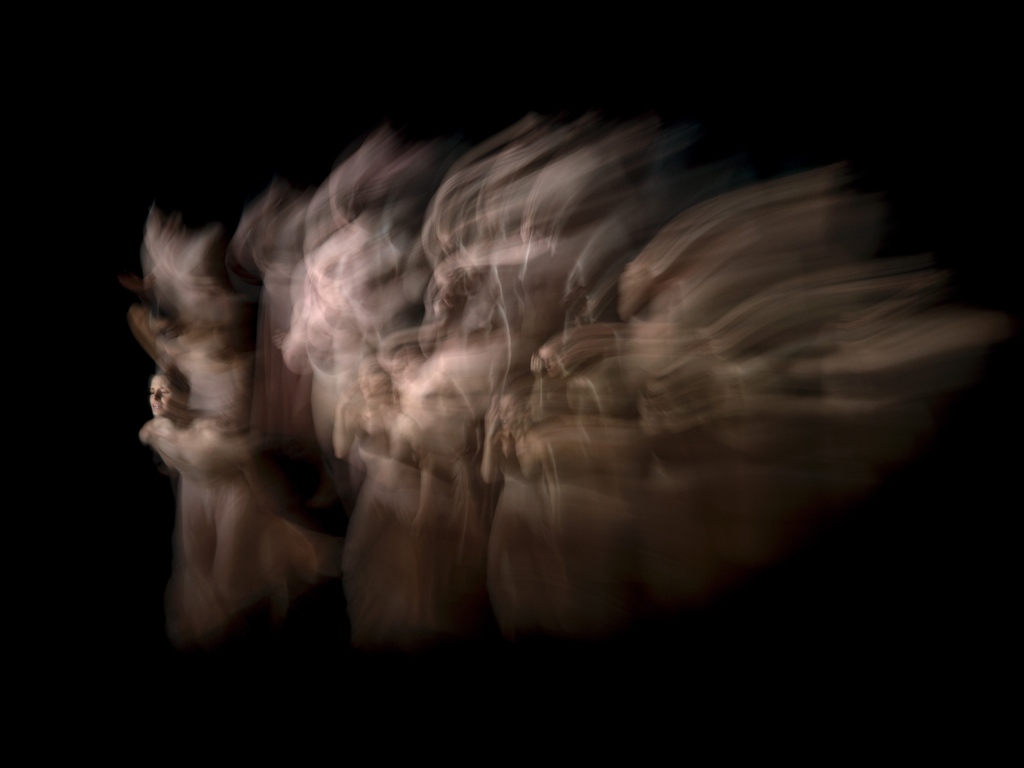
From the “Catharsis” series, Pina Bausch’s Orpheus and Eurydice
The Paris Opera Ballet company has the image of focusing on classical ballet but, for instance, this season included Le Parc, which had moved Pierre-Elie greatly, and Pina Bausch’s Orpheus and Eurydice, contemporary works making up an important part of the program. Another reason why he applied to photograph for a second season was because one of his favorite works, Wayne McGregor’s L’Anatomie de La Sensation, which was created in homage to Francis Bacon, was on the program. Compared to classical ballet, the artist is given more leeway to interpret the work freely in contemporary ballet and sometimes it even includes improvisation by the dancer. After his “Confidences” series in which he merely captured what he saw in front of him, he decided to take a more personal approach and this resulted in the “Catharsis” series. The majority of works he chose for the “In Situ” exhibition feature scenes from contemporary ballet. The heat, light and energy that diffuse the dancer’s inner being…the shock and excitement Pierre-Elie experienced is transmitted abstractly through the blurred outlines in the photographs, leaving the viewer free to interpret the emotions these evoke when confronted with them.
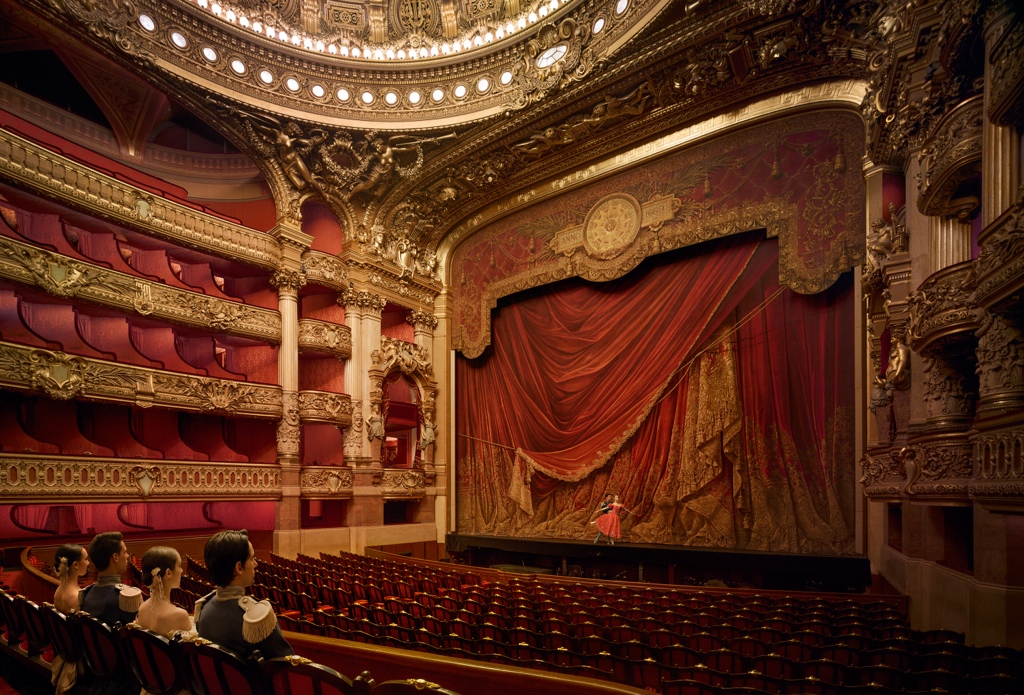
From the “Analogia” series
It is impossible to talk about the Paris Opera without mentioning the building that houses it. Although not a royal palace, it takes the name of its architect and is referred to as the Palais Garnier. Completed in 1875, it is the thirteenth theater to have housed the Paris Opera since it was founded more than 350 years ago during the reign of Louis XIV. Having won the architectural design competition for the building, Garnier’s stage equipment and lighting, etc., still remain in use 150 years after they were planned. Even the invisible parts of the design were revolutionary for the time and it employed an iron framework in the period before the Eiffel Tower was built. The Grand Foyer is reminiscent of the Palace of Versailles in the way that it employs numerous mirrors, and the ‘look and be looked at’ Grand Staircase, make it a most sumptuous and graceful building that never fails to excite the imaginations of its visitors.
In order to express his respect for this building, Pierre-Elie produced the “Analogia” series in which he positioned the dancers within its historical dignity. The auditorium, the subscriber’s rotunda, the dance foyer backstage, the roof…numerous young dancers cooperated with him to take these pictures, wearing their stage costumes and adopting poses. He put a lot of thought into the lighting, sometimes creating an atmosphere, sometimes using bright lights in order to capture fine details and sometimes using daylight to achieve the compositions that he had planned in advance. These photographs differ from the “Confidences” series, in which he captured moments in the lives of the dancers or the abstract photographs of the “Catharsis” series, expressing instead the splendor of the building in painting-like photographs.
When asked their favorite place in the Palais Garnier, many of the dancers choose the dance foyer, where they warm up before going on stage. Brilliantly lit by chandeliers, the walls are covered in mirrors that multiply the splendor of the golden decoration, adding to its magnificence to create a place of concentrated beauty. It has a high ceiling and all the way around the top of the walls hang portraits of the étoiles of the past, looking down gently on the dancers who are about go onto the stage.
However, this wonderful place has a dark past. The artist Edgar Degas visited the Paris Opera regularly at the end of the nineteenth century to paint a series of work featuring ballet dancers, but at this time the ballerinas still had to depend on rich and powerful men in order to receive money and protection. As can be seen in these paintings by Degas, the place where these women met the rich subscribers was the dance foyer. This evil custom was finally stopped by Serge Lifar, who had himself been a dancer with the Ballets Russes and was also friends with Coco Chanel. In 1930 he became the ballet master and not only forbid the entry of men to the foyer, but also turned out the lighting in the auditorium during performances, making every effort to elevate ballet from mere entertainment to art.
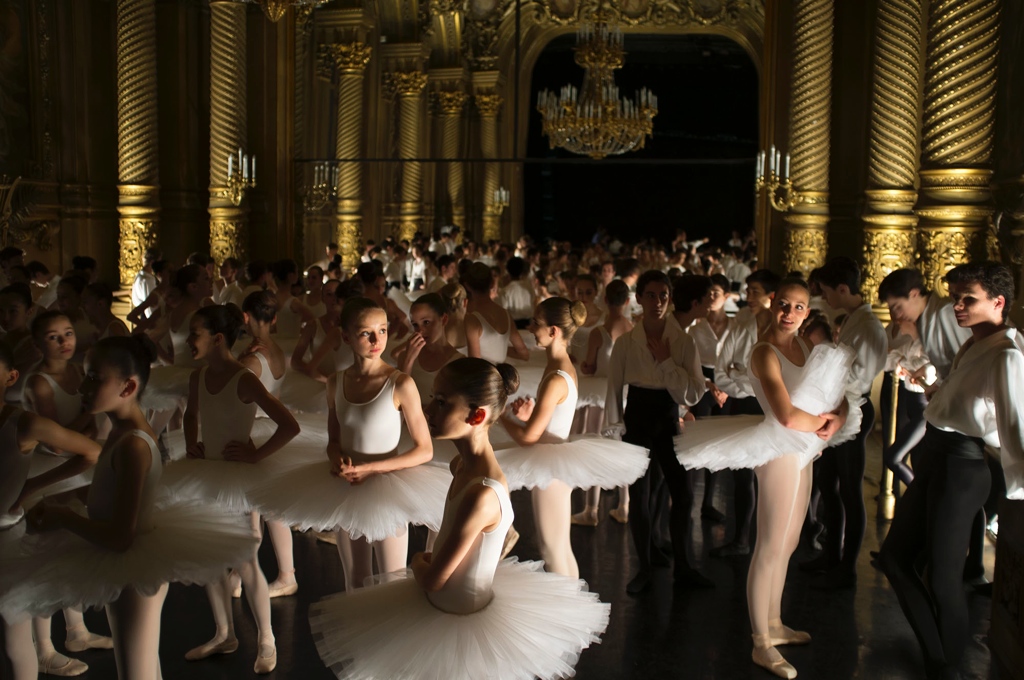
From the “Confidences” series, ‘les petits rats‘
Another event that is as popular as the farewell performance by one of the étoile and for which it is difficult to obtain tickets is the Défilé du Ballet, which is unique to the Paris Opera. The défilé had originally been held in 1926 but Lifar resurrected it after it had fallen out of use for many years and changing the music from Richard Wagner’s Tannhäuser’ to Berloiz’s Les Troyens, he included it in the annual repertoire from 1947. Starting with the pupils of the Paris Opera’s Ballet School, the entire company parade gracefully onto the stage, finishing with the étoiles. When this takes place, the wall at the rear of the stage is removed, providing the audience with a rare glimpse of the resplendent beauty of the dance foyer. The light of the chandeliers is reflected by the mirrors to create a dazzling space from which the dancers appear in succession, creating a magical moment in a magical space. The students of the Paris Opera’s Ballet School are known as ‘les petits rats‘ or ‘the little rats’, this nickname deriving from when the school was situated on the highest floor of the Palais Garnier and during the défilé, they are able to share the space and experience of the Garnier’s sloping stage with their favorite étoiles for the first time and dream of their future as inheritors of Fance’s culture. Excitement, anticipation, unease…Pierre-Elie was blessed with the opportunity to photograph the défilé closeup from the backstage area.
“In Situ” allows the viewers to immerse themselves in this world as they look at each photograph and in this way Pierre-Elie shares his lucky opportunity with everyone.
Text: Mariko Omura
All Photos ©Pierre-Elie de Pibrac/Agence Vu’
INFORMATION
KYOTOGRAPHIE 2020
In Situ
Pierre-Elie de Pibrac Exhibition
presented by CHANEL NEXUS HALL
In Situ
Pierre-Elie de Pibrac Exhibition
presented by CHANEL NEXUS HALL
10:00 - 17:00 Closed on Mondays (except for September 21) / Free admission
Venue: Main Office, Former Main Building of the Kyoto Prefectural Office
